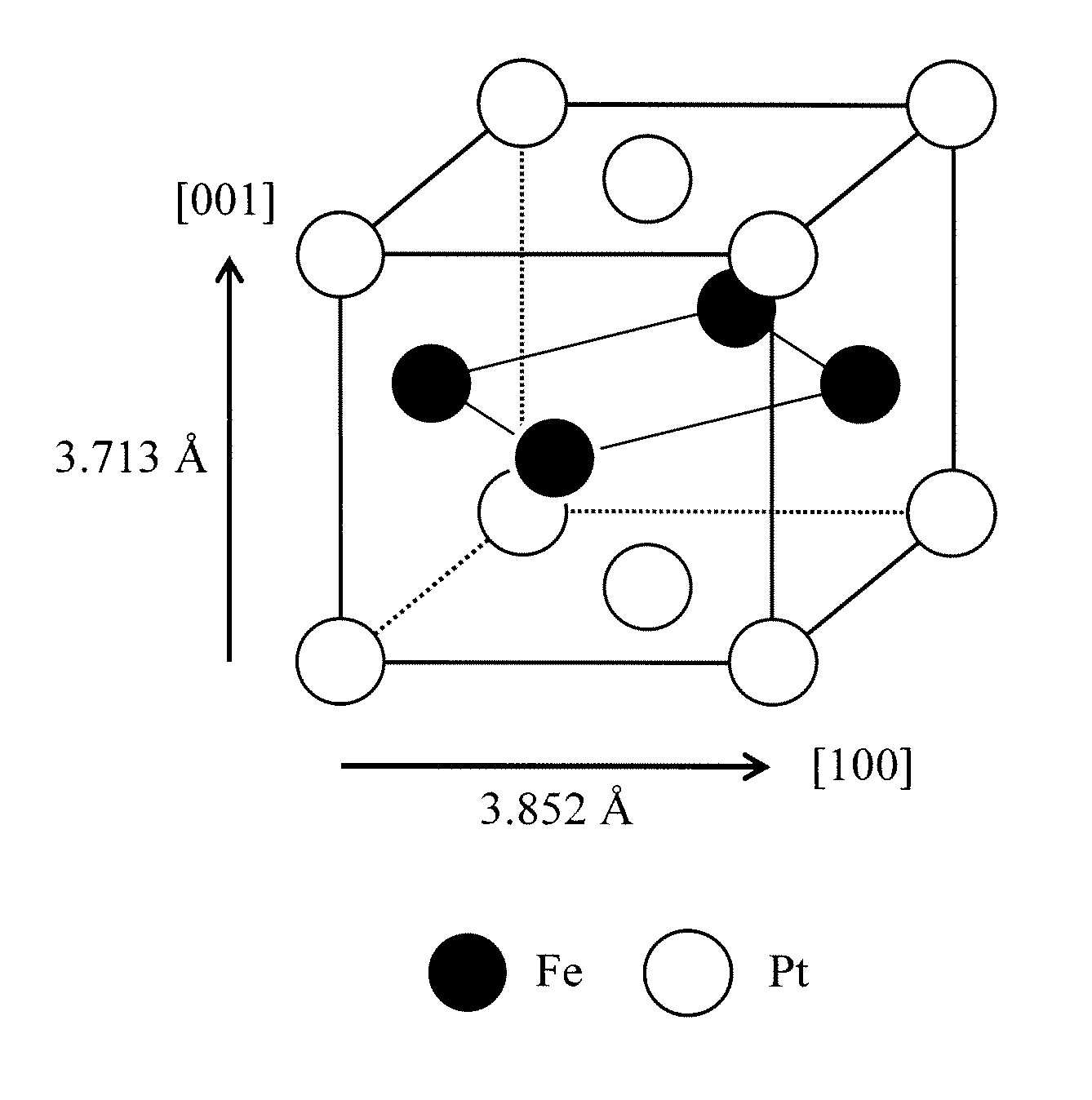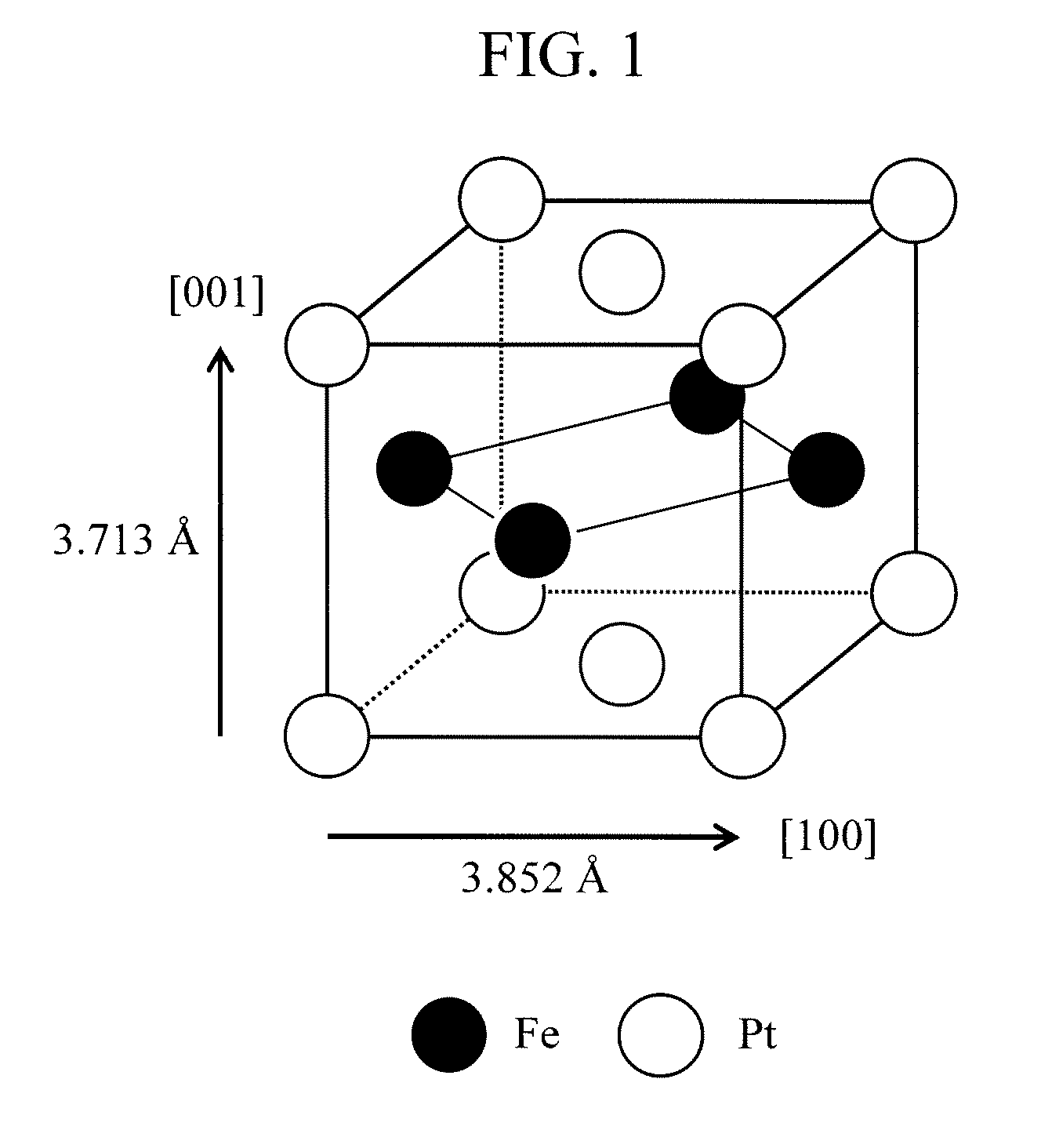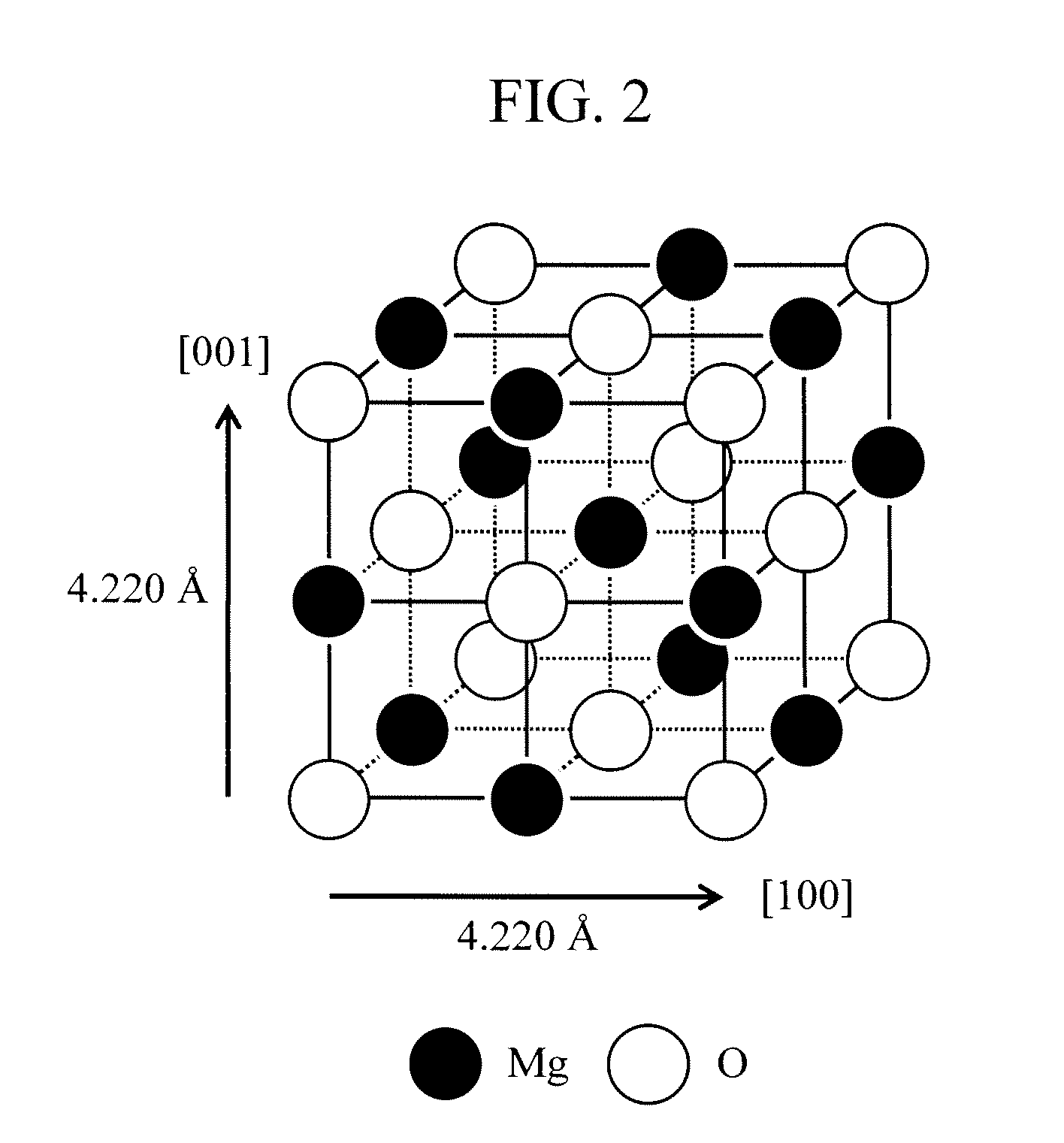Magnetic recording medium and magnetic recording apparatus
- Summary
- Abstract
- Description
- Claims
- Application Information
AI Technical Summary
Benefits of technology
Problems solved by technology
Method used
Image
Examples
first example
[0052]The magnetic recording medium 10 was manufactured in such a manner that a heat-resistant glass was used to form the substrate 100; an Ni—Ta layer with a thickness of 100 nm was formed thereon as the adhesion layer 110; a strontium titanate layer with a thickness of 12 nm was formed thereon as the conductive compound layer 120; the MgO underlayer 130 with a thickness of 1 nm was formed thereon; a 70 vol % (45 at % Fe-45 at % Pt-10 at % Ag)-30 vol % C layer with a thickness of 6 nm was formed thereon as the magnetic recording layer 140; and a carbon nitride layer with a thickness of 4 nm was formed thereon as the overcoat 150 in a sequential manner. The time required to form the MgO underlayer 130 with a thickness of 1 nm was 2.0 seconds.
[0053]An inline high-speed disk sputtering system (C-3010) manufactured by Canon ANELVA Corporation for use in mass production of a magnetic recording medium for a hard disk drive was used to manufacture the magnetic recording medium 10 accordin...
second example
[0061]The second example of the present invention used the same method as that of the first example except that the thickness of the MgO underlayer 130 was variously changed to manufacture a plurality of magnetic recording media 10. The characteristics of these magnetic recording media 10 were evaluated by the same method as that of the first example.
[0062]FIG. 6 is graphs plotting the saturation magnetization, the coercivity, the magnetic anisotropy constant, the order parameter, the crystalline orientation randomness, and the grain diameter of the magnetic recording media 10 according to the second example with respect to the thickness of the MgO underlayer 130. Here, the crystalline orientation randomness is defined as a diffraction peak intensity from the (111) crystal plane normalized by a diffraction peak intensity from the (002) crystal plane in the X-ray diffraction pattern. A larger value means that the film surface perpendicular orientation of the [001] axis is incomplete....
third example
[0069]The third example of the present invention used the same method as that of the first example except that a Cr layer with a thickness of 7 nm was added and formed as the orientation control layer between the adhesion layer 110 and the conductive compound layer 120 to manufacture the magnetic recording medium 10. The characteristics of this magnetic recording medium 10 were evaluated by the same method as that of the first example.
[0070]The first to second rows of FIG. 7 list the values of the coercivity, the magnetic anisotropy constant, and the crystalline orientation randomness of the magnetic recording media 10 according to the first example and the third example respectively. In the case of the magnetic recording medium 10 according to the first example (first row), a very small amount of diffraction peak from the (111) crystal plane of the FePt alloy was observed, while in the case of the magnetic recording medium 10 according to the third example, the diffraction peak fro...
PUM
 Login to View More
Login to View More Abstract
Description
Claims
Application Information
 Login to View More
Login to View More - R&D
- Intellectual Property
- Life Sciences
- Materials
- Tech Scout
- Unparalleled Data Quality
- Higher Quality Content
- 60% Fewer Hallucinations
Browse by: Latest US Patents, China's latest patents, Technical Efficacy Thesaurus, Application Domain, Technology Topic, Popular Technical Reports.
© 2025 PatSnap. All rights reserved.Legal|Privacy policy|Modern Slavery Act Transparency Statement|Sitemap|About US| Contact US: help@patsnap.com



